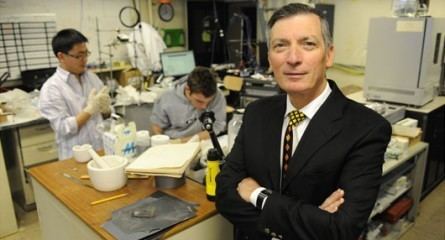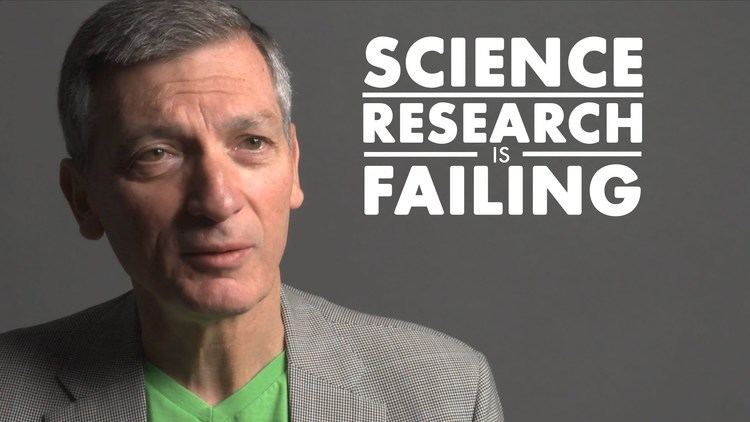Nationality Canadian Role Professor Name Donald Sadoway | Website DonaldSadoway.com | |
Full Name Donald Robert Sadoway | ||
Dr donald sadoway hh angus ideation 2015
Donald Robert Sadoway (born 7 March 1950) is the current (as of January 2013) John F. Elliott Professor of Materials Chemistry at the Massachusetts Institute of Technology. A faculty member in the Department of Materials Science Engineering, he is a noted expert on batteries and has done significant research on how to improve the performance and longevity of portable power sources.
Contents
- Dr donald sadoway hh angus ideation 2015
- Advancing the energy revolution by donald sadoway
- Background
- Research
- Teaching
- Media recognition
- References

Advancing the energy revolution by donald sadoway
Background

Sadoway was born in Toronto, Ontario, Canada. He did both his undergraduate and graduate studies at the University of Toronto, receiving his PhD in 1977. There he focused his studies on chemical metallurgy. He also served on the National Executive of the Ukrainian Canadian Students' Union (SUSK) from 1972–1974. In 1977, he received a NATO postdoctoral fellowship from the National Research Council of Canada and came to MIT to conduct his postdoctoral research under Julian Szekely. Sadoway joined the MIT faculty in 1978. On June 19, 2013, Sadoway was presented with an honorary Doctor of Engineering by the University of Toronto in recognition for his contributions to higher education and sustainable energy.
Research

As a researcher, Sadoway has focused on environmental ways to extract metals from their ores, as well as producing more efficient batteries. His research has often been driven by the desire to reduce the carbon pollution output by various industries. He is the co-inventor of a solid polymer electrolyte. This material, used in his "sLimcell" has the capability of allowing batteries to offer twice as much power per kilogram as is possible in current lithium ion batteries.
In August 2006, a team that he led demonstrated the feasibility of extracting iron from its ore through molten oxide electrolysis. When powered exclusively by renewable electricity, this technique has the potential to eliminate the carbon dioxide emissions that are generated through traditional methods.
In 2009, Sadoway proposed a very low cost molten salt battery based on magnesium and antimony separated by a salt that could be used in stationary energy storage systems. Research on this concept was being funded by ARPA-E, Total S.A. and others, including Bill Gates. Experimental data showed a 69% DC-to-DC storage efficiency with good storage capacity and relatively low leakage. In 2010, Sadoway and two others, David Bradwell and Luiz Ortiz, co-founded a company called Ambri in order to scale up and commercialise the technology. They planned to have a commercial prototype built in 2014.
Teaching
For 16 years Sadoway taught 3.091 Introduction to Solid State Chemistry at MIT, one of the largest classes at MIT. Sadoway's animated teaching style was popular with students and freshman enrollment in the course steadily increased through 2010.
In the fall of 2007, the number of students registering for 3.091 reached 570 students, over half the freshman class. The largest lecture hall available on campus seats 566 students, enough to amply house the class. Sadoway much preferred teaching in one of the smaller lecture halls, seating only 450; as such, the Institute had to take the unprecedented step of streaming digital video of the lecture into an overflow room to accommodate all the students interested in taking the course. In contrast, most classes at MIT are relatively small with approximately 60% of classes at MIT having fewer than 20 students. The popularity of this course has reached outside of the MIT campus as a result of the MIT OpenCourseWare initiative. This is seen in a comment by Bill Gates who told the Seattle Post-Intelligencer "... Everybody should watch chemistry lectures -- they're far better than you think. Don Sadoway, MIT -- best chemistry lessons anywhere. Unbelievable". Sadoway's lectures often included the history of science, especially with respect to the Nobel Prize. Sadoway gave out "library assignments" in which he asked students to research Nobel Prize–winning papers. He began his lectures by playing music, which has some connection with the lecture's material. He ended his lectures with five minutes of culturally relevant material, such as automotive exhaust processing or forensic examination of paintings.
Media recognition
In March 2012, Sadoway gave a TED talk speech on grid storage using antimony batteries.
Sadoway was named one of Time magazine's "Top 100 Most Influential People in the World" in 2012 for his continuing work in improved batteries.
On October 22, 2012, Sadoway appeared as a guest on The Colbert Report to discuss his liquid metal battery research, and his design for a magnesium-antimony molten salt battery.
He has also appeared in MIT Gangnam Style.
In January 2013, Donald Sadoway was featured in Government Technology magazine's Spectrum section, which features research, science and technology tech bites.
